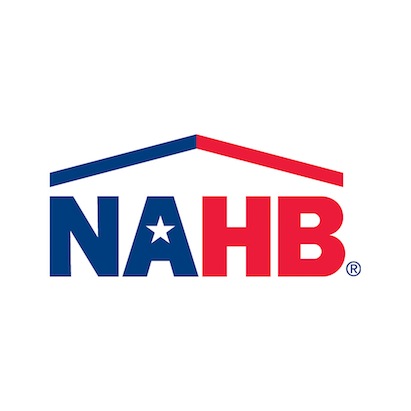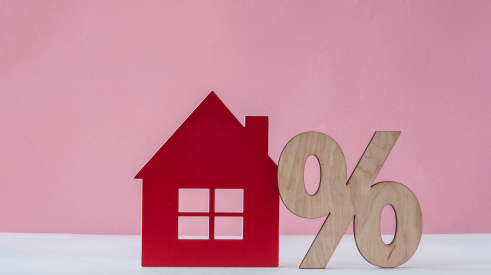Buoyed by rising home prices throughout much of the nation, both single-family and multifamily housing starts are expected to post double-digit gains in 2013 compared with last year. However, headwinds continue to hold back even stronger growth as the housing recovery evolves, according to economists at NAHB's Spring 2013 Construction Forecast Conference Webinar.
"The broadening housing expansion is evidenced by the NAHB/First American Improving Markets Index, which now lists 273 metros areas out of a universe of 361, or three-quarters of the metropolitan areas in the U.S.," said NAHB Chief Economist David Crowe.
The recent surge is almost all due to improvements in house prices across a broader number of markets, he added. Home price increases became more solid and consistent in 2012, and the latest data shows a nearly 6 percent annual rate of home price appreciation on a national basis.
Growth in the housing sector is rising at a much faster pace than the overall economy during this phase of the recovery, Crowe added. The residential fixed investment component of GDP was up 17.5 percent in the fourth quarter of 2012, whereas total economic output registered only a 0.4 percent gain.
As demand for housing gradually picks up steam, supply chains for building materials, developed lots, and skilled workers will take some time to re-establish themselves in the aftermath of the Great Recession.
Meanwhile, builders are feeling pinched by rising costs of key building components (prices of gypsum, softwood lumber and concrete are all above 90 percent of their housing boom peak), which is causing home construction costs to rise at a faster pace than appraised values, Crowe said.
Moreover, ongoing difficulties in obtaining construction credit, overly restrictive mortgage lending rules, and uncertainty in Washington regarding the future of housing financial regulations and housing tax incentives, including the mortgage interest deduction and Low Income Housing Tax Credit, threaten to dampen consumer confidence and future housing demand.
Setting the 2000 to 2003 period before the housing boom as a time of normal residential building production, Crowe said that residential remodeling has returned to previously normal levels of the early 2000s and that remodeling activity is expected to register a 2.2 percent gain this year over 2012.
Meanwhile, NAHB's Multifamily Production Index, a leading indicator for the multifamily market, has jumped 38 points in the past four years and now stands at 54. For the past three quarters, the index has been above the critical tipping point of 50, where a reading of 50 means that an equal number of builders view conditions in the multifamily market as good and bad.
Multifamily starts are expected to rise to 334,000 units in 2013, up 35 percent from last year's 247,000 level, bringing production back to the baseline level that is needed to keep the supply in balance with demand. Multifamily starts are anticipated to rise an additional 5 percent next year to 349,000 units.
The single-family market, which must make up the most ground to return to its 2000-2003 level of normal production (1.3 million units), continues to make steady gains. NAHB is forecasting 672,000 single-family housing starts in 2013, up 23 percent from the 534,000 units recorded last year. Single-family production is expected to rise an additional 28 percent in 2014, to 858,000 units.
Fed to the rescue
Taking a more bullish approach to the housing and economic recovery, Maury Harris, managing director and chief economist for the Americas for UBS, expects housing starts to total 1.1 million units this year (700,000 single-family and 400,000 multifamily) and 1.35 million units (900,000 single-family and 450,000 multifamily) in 2014.
"My view is that monetary policy is more important than fiscal policy," Harris said, noting that the sequester will cut about $85 billion in spending out of the economy this year while the Federal Reserve's monetary expansion policy is pumping $85 billion into the economy every month.
"As the Fed buys securities and pumps reserves into the banking system, this is easing lending standards and that will help job growth," he added.
Harris expects unemployment to fall to 7.5 percent at the end of this year and 6.7 percent at the end of 2014.
With job formation a critical variable affecting household formation, Harris expects 1.1 million new households to form this year and an average of 1.3 million new household formations annually over the next three years.
During the housing downturn, new household formations plummeted to 500,000 annually. As housing and the economy recover, there is a large pent-up demand for housing. Harris said that the household gap, which is the difference between potential and actual household formation, is about 2 percent of potential households or about 2 million.
"The bottom line: We're reasonably optimistic about the economy," Harris said. "The public doesn't sufficiently appreciate all the good that the Fed is doing."
Conditions vary by state
Now that the boom and bust carnage is over, a major development on the housing front is that housing markets are reconnecting to their underlying economies, according to Robert Denk, NAHB's assistant vice president for forecasting and analysis.
"The housing market is now being driven by local economic fundamentals," said Denk. "Energy states and those driven by agricultural commodities are seeing their housing markets turn around the fastest."
California, Florida, Nevada, and Arizona, which fell the farthest during the housing downturn, bottoming out at 10 to 20 percent of normal production, are showing progress in making a comeback. Home prices in many of these markets are returning to normal and near-normal levels, thanks in part to foreclosure rates that have eased significantly since hitting their peak in 2009.
"While these former bubble states still have a long way to go to get back to normal, they have been replaced by the industrial Midwest, which is facing weakness in manufacturing, as the laggard in the recovery," said Denk.
Led by North Dakota, Texas, Oklahoma, Wyoming, Montana, and Louisiana, the energy producing states are the first states projected to return to normal production levels by the end of next year, Denk said. Iowa, a farm belt state supported by agricultural commodities, is also approaching a faster return to normal conditions.
In another way of looking at the long road back to normal, by the end of 2014, the top 20 percent of states will be at or above 87 percent of normal production, compared to the bottom 20 percent, which will still be below 60 percent.







